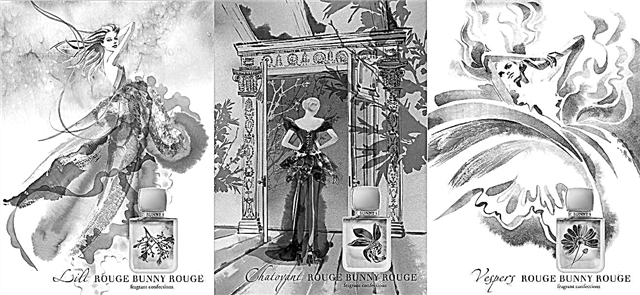Share
Pin
Tweet
Send
Share
Send
Minerals, plant roots, metals - all this chemist Georg Kremer grinds into powder in his workshop, preparing paints according to almost forgotten recipes.

Founder Georg Kremer (left) with his son David
And it all began, as often happens, with small things. At the end of the 70s of the last century, Georg Kremer began his studies at the Faculty of Chemistry with a specific goal: to revive the forgotten tradition of making paints according to ancient recipes, supplanted by more profitable modern industrial methods. Going to establish the sale of natural paints, the student did not even count on such success of his future enterprise. He simply decided to get down to business that was interesting to him.
A simple interest in the case prompted the scientist and his team to an unusual and persistent search. They didn’t care what this or that paint intended for was intended for - restoration of old frescoes in a church or for a painter who needed exactly that and no other shade for his masterpiece.The Kremer enterprise was looking for the right mineral, plant, earth around the world - and found the right pigment! Indeed, over time, many old recipes for making priceless natural paints have accumulated in the archives of Kremer.
Georg shares his knowledge with everyone who wants to - in the old windmill, he regularly conducts informative excursions, during which he talks about old ways of making and mixing paints. Welcome to the Allgäu Alps, to the cozy Aichstetten little hillock, to the Kremer Pigmente workshop!
We also invite you to take a short photo tour of Georg Kremer’s workshop.
Photo captions:
PHOTO 1 This speck is obtained from the red-brown rhizomes of madder (Rubia tinctoria). Several dozens of years ago, bookbinders stained them with edged books.
PHOTO 2 Violet cobalt - these are simple salts: phosphates and arsenates of cobalt. From them you can get pigments of different shades that perfectly transmit, for example, the color of muscari (mouse hyacinth).
PHOTO 3 Road signpost to Kremer’s workshop.
PHOTO 4 To prepare natural kraplak, madder roots are dried, peeled and ground in a mill. The resulting powder is first heated in a water bath and treated with acids.
PHOTO 5 Using alum and tin salts, coloring pigments are isolated from the roots of madder when heated. Depending on which alum and tin salts are used, they get different shades - brown-violet, cinnabar-red, ocher-red, pink, bright orange and even a deep black shade.
PHOTO 6 Natural pigment in its shade is very close to the shade of future paint.
PHOTO 7 Then the extracted pigments are processed into oil or adhesive paints. They are used for painting on paper, as well as on fabrics such as natural silk and cotton.
PHOTO 8 And this is precious azure, highly valued by icon painters until the beginning of the 18th century, when cheaper Berlin azure made of ferrocyanide of iron appeared. And in the middle of the XVIII century, Mikhail Lomonosov received azure from bovine blood, alkali, iron sulfate and alum.
PHOTO 9 Untreated lapis lazuli stones from Afghanistan are not cheap: they ask for $ 600 per 1 kg.
PHOTO 10 Stone powder is made according to an old recipe.
PHOTO 11 For this, the stones are first ground (ground) in a mortar with a pestle into a coarse-grained loose mass.
PHOTO 12 Then the stones are ground into a powdery mass and sieved.
PHOTO 13 After that, the powder from lapis lazuli is cleaned: knead (mix) it with wax and resins, pour it into linen bags and wash it many times.
PHOTO 14 At the end, the liquid is drained, and the remaining powder - the blue pigment - is dried.
PHOTO 15 In the shop at the Kremer workshop you can buy natural paint of any shades from white to black without intermediaries.
Photo: Georg Kremer (7); Monica Titelius (1); Kremer Pigmente (3).
Material prepared by Elena Karpova
Share
Pin
Tweet
Send
Share
Send


















